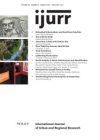This debate section gathers together contributions from cultural historians, political geographers, urban sociologists and architectural writers on new forms of ruination in contemporary landscapes. Their case studies span examples of ruins in China, North America, Ireland and Ukraine, as well as reviewing cultural representations of ruined, remote and peripheral spaces in England and Greece. Many wider cultural representations of ruined landscapes are primarily visual; whilst these have great value in alerting wider publics to the debris of global capitalism, neoliberalism and state‐sanctioned processes of cultural imperialism, what is needed within academic contributions to the ruinology literature is a deeper understanding and articulation of the wider contexts within which ruination occurs. Therefore, several contributions supplement visual representations of ruination with ethnographic and first‐person accounts of places on the ground, whereas other contributions offer readings of ruined landscapes that are rich in political histories and policy details. Connections are made to wider contemporary debates around ‘forensic architecture’ and critical archaeologies of the present and recent past. What connects these contributions is a commitment to situating ruins within their historical, policy and social contexts, and working through ruination to open out political readings of landscape.
Details
Written by:
Daryl Martin
Digital Object Identifier (DOI)
10.1111/1468-2427.12116
About DOI
Read full article as PDF
Read full article as HTML
See the references for this article
